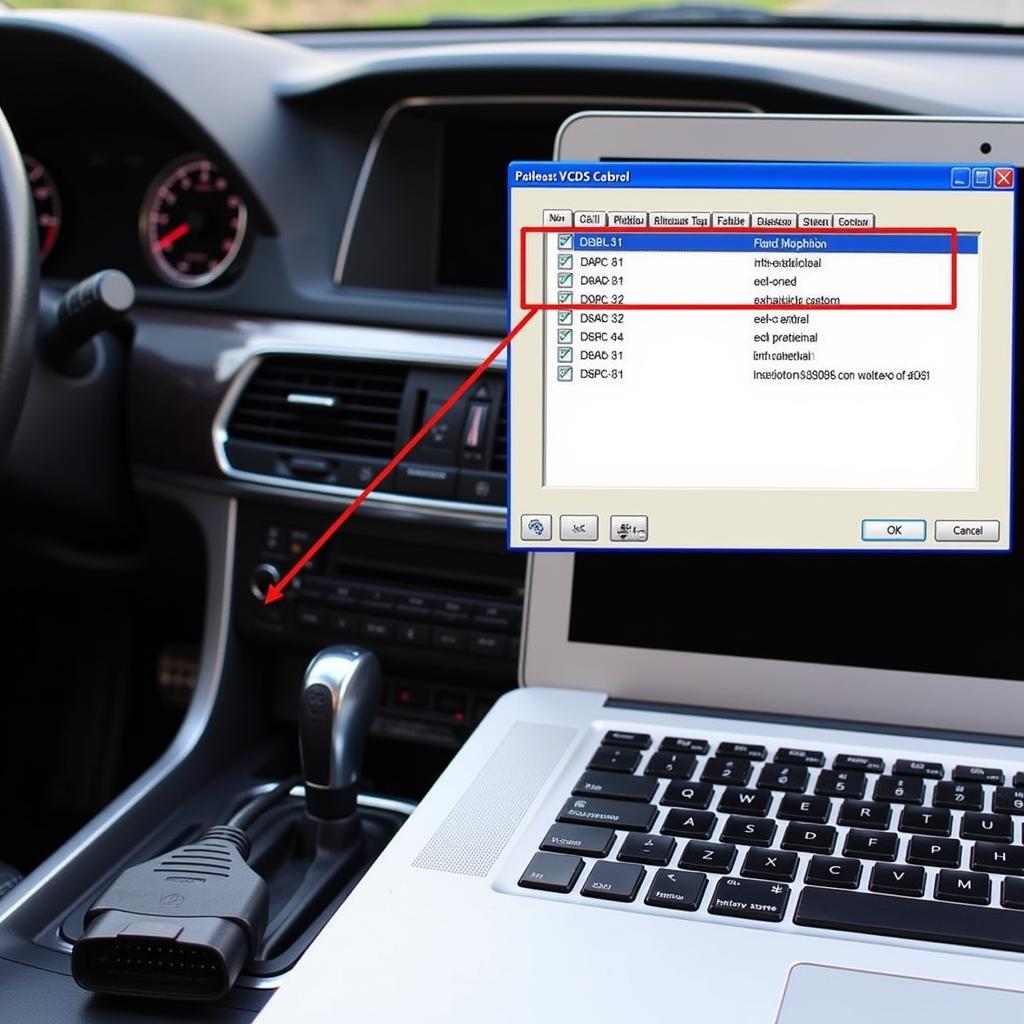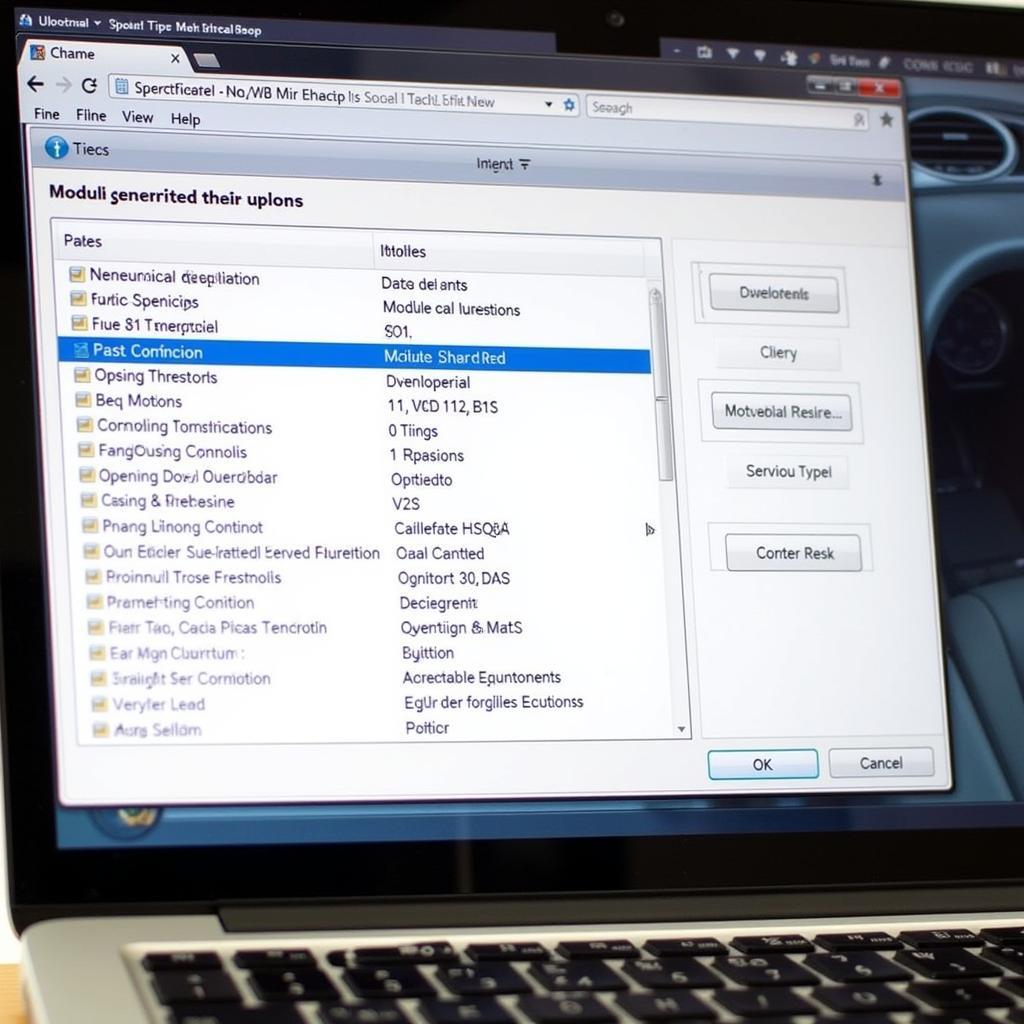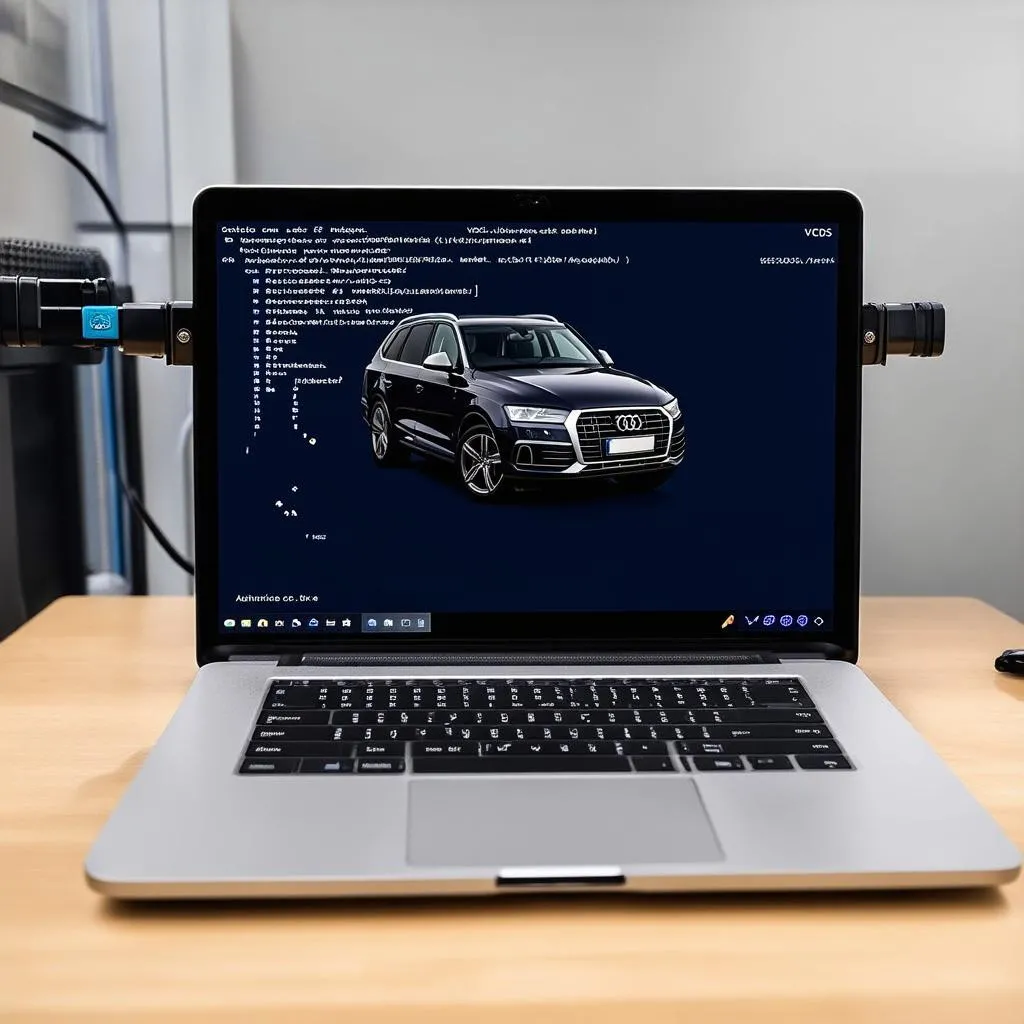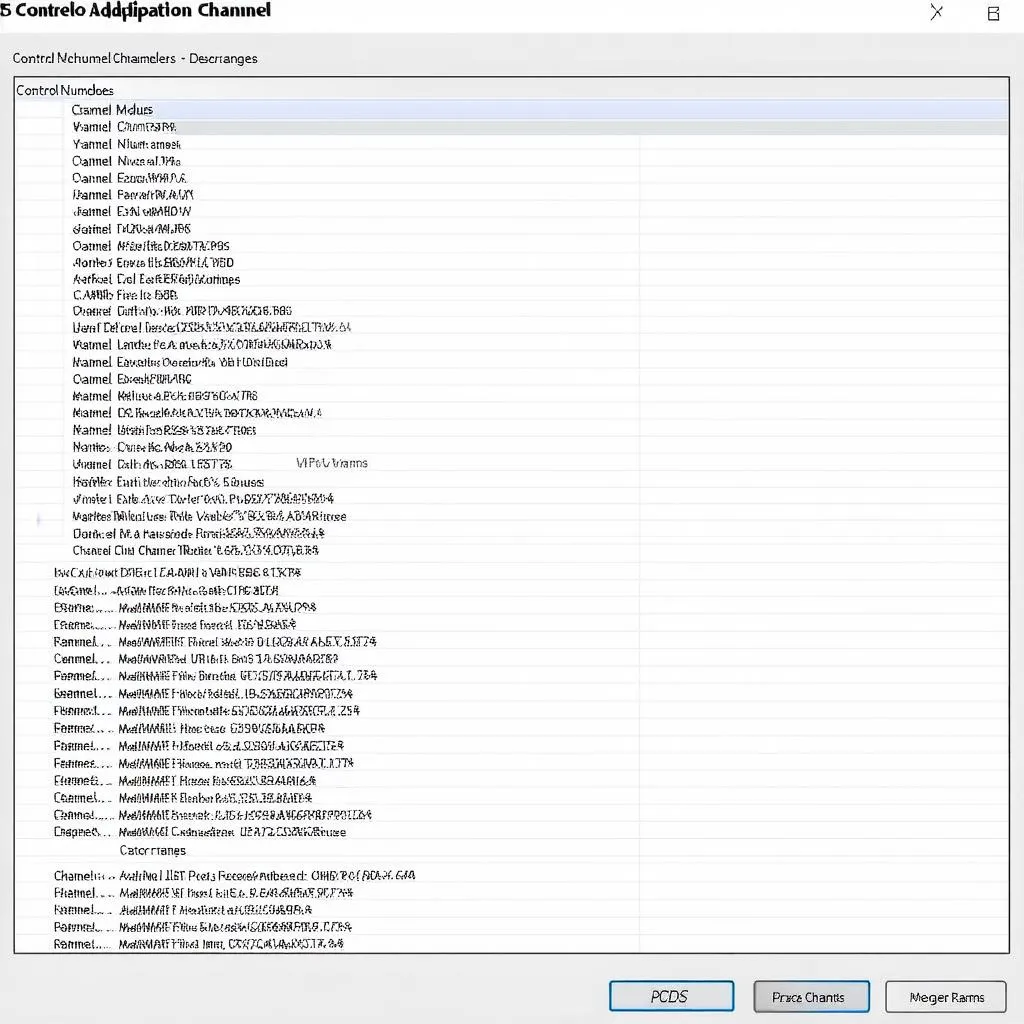Controlling your car’s exhaust flap with VCDS (VAG-COM Diagnostic System) can offer several benefits, from a sportier exhaust note to potentially improved performance. This guide delves into the intricacies of VCDS exhaust flap modification, providing you with the knowledge and understanding to harness its potential safely and effectively.
Understanding how the exhaust flap works is crucial before making any modifications. In many modern vehicles, particularly those with performance-oriented exhaust systems, an exhaust flap regulates the flow of exhaust gases. This flap can be controlled electronically via the vehicle’s ECU (Engine Control Unit). By adjusting the flap’s position, you can alter the exhaust sound and, in some cases, the backpressure, which can influence engine performance. Using VCDS allows you to access and modify the ECU’s settings related to the exhaust flap, giving you direct control over its operation.
What is an Exhaust Flap and How Does it Work?
The exhaust flap is a valve within the exhaust system that can open and close, modulating the path of exhaust gases. When closed, the exhaust gases are forced through a more restrictive path, often resulting in a quieter and more refined exhaust note. Opening the flap allows the gases to bypass this restriction, leading to a louder, more aggressive sound, often associated with sportier driving.
Using VCDS to Control Your Exhaust Flap
Accessing the exhaust flap settings with VCDS involves connecting the diagnostic tool to your vehicle’s OBD-II port and navigating to the appropriate control module. The specific location of these settings varies depending on the make and model of your vehicle. Consulting your vehicle’s specific VCDS coding documentation is highly recommended. Once located, you can modify the parameters controlling the flap’s behavior, such as the conditions under which it opens and closes.
 Connecting VCDS to OBD-II Port for Exhaust Flap Control
Connecting VCDS to OBD-II Port for Exhaust Flap Control
Common modifications include setting the flap to remain permanently open, mimicking a “sport mode,” or adjusting the RPM threshold at which the flap opens. However, it’s essential to proceed cautiously and understand the potential implications of these changes. Incorrectly modifying these settings could trigger error codes or negatively impact engine performance. Always back up your original coding before making any changes. This allows you to revert to the factory settings if necessary.
Benefits of VCDS Exhaust Flap Control
The primary advantage of using VCDS to control the exhaust flap is the ability to customize the exhaust sound to your preference. Whether you prefer a constant sporty growl or a more subtle change, VCDS offers the flexibility to achieve the desired acoustic profile. In some cases, modifying the exhaust flap behavior can also lead to slight performance gains, particularly in the higher RPM range. However, this is often vehicle-specific and requires careful tuning. This level of customization allows you to personalize your driving experience and tailor your vehicle’s performance characteristics.
 VCDS Software Interface for Exhaust Flap Adjustment
VCDS Software Interface for Exhaust Flap Adjustment
Potential Risks and Considerations
While VCDS offers powerful customization options, it’s crucial to acknowledge potential risks. Improperly modifying the exhaust flap settings can lead to issues such as check engine lights, reduced fuel efficiency, or even damage to the exhaust system. Always refer to reliable resources and coding guides specific to your vehicle. Understanding the intricacies of your vehicle’s exhaust system and the implications of your modifications is paramount for safe and effective tuning.
Similar to [vw jetta vcds mods], adjusting the exhaust flap offers a level of customization not readily available through standard vehicle settings.
Troubleshooting Common VCDS Exhaust Flap Issues
If you encounter problems after modifying your exhaust flap settings, the first step is to revert to your backed-up coding. If the issue persists, consult online forums and VCDS communities for assistance. These platforms often offer valuable insights and solutions to common problems.
Conclusion
VCDS offers a powerful tool for controlling your exhaust flap, allowing you to customize your vehicle’s sound and potentially improve its performance. However, it’s essential to proceed with caution and thoroughly research the specific coding procedures for your make and model. By understanding the principles of exhaust flap operation and utilizing VCDS responsibly, you can unlock the potential of your vehicle’s exhaust system. Remember, accurate information and careful execution are key to achieving desired results while avoiding potential pitfalls.
FAQ
-
What is VCDS? VCDS is a diagnostic software that allows you to access and modify the settings of various control modules in your vehicle.
-
Is it safe to modify exhaust flap settings with VCDS? Yes, provided you follow proper procedures and use reliable coding information.
-
Can modifying the exhaust flap damage my engine? Improper modifications can potentially cause issues, so it’s crucial to proceed with caution and research thoroughly.
-
Where can I find reliable VCDS coding information for my car? Online forums, VCDS communities, and vehicle-specific documentation are valuable resources.
-
What should I do if I encounter problems after modifying the exhaust flap settings? Revert to your backed-up coding and consult online resources or VCDS communities for assistance.
-
Can I adjust the RPM at which the exhaust flap opens with VCDS? This depends on the specific vehicle and its exhaust system. Consult your vehicle’s VCDS coding documentation for possibilities.
-
Will modifying the exhaust flap void my warranty? Modifications not approved by the manufacturer may impact your warranty. Consult with your dealership for clarification.
For further VCDS modifications, check out [vcds tricks]. If you have a Golf R, you might find [golf r vcds] helpful. Audi owners can explore [a3 8v vcds mods] and [audi s3 8v vcds mods].
Need assistance? Contact us via Whatsapp: +1 (641) 206-8880, Email: CARDIAGTECH[email protected] or visit us at 276 Reock St, City of Orange, NJ 07050, United States. We offer 24/7 customer support.


